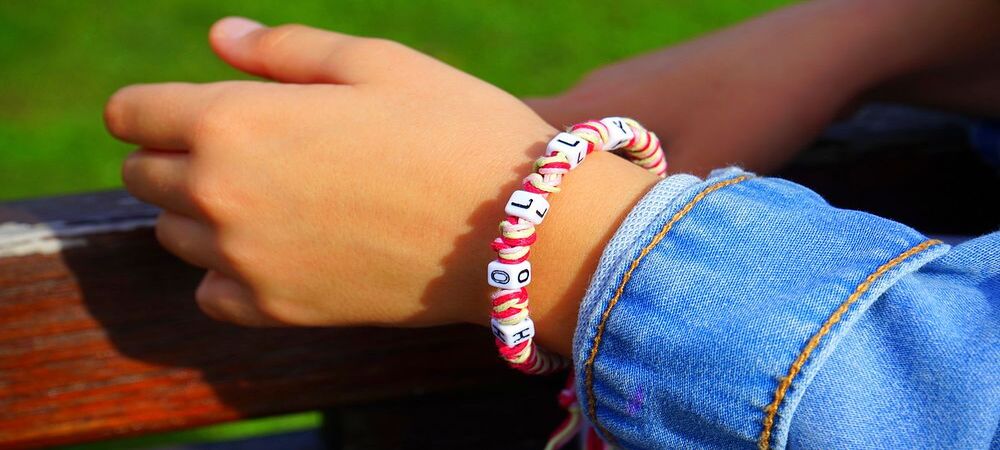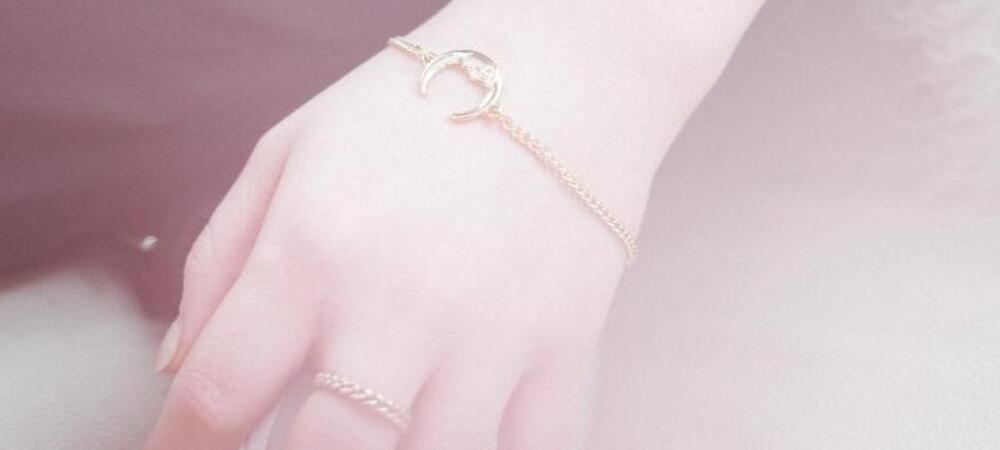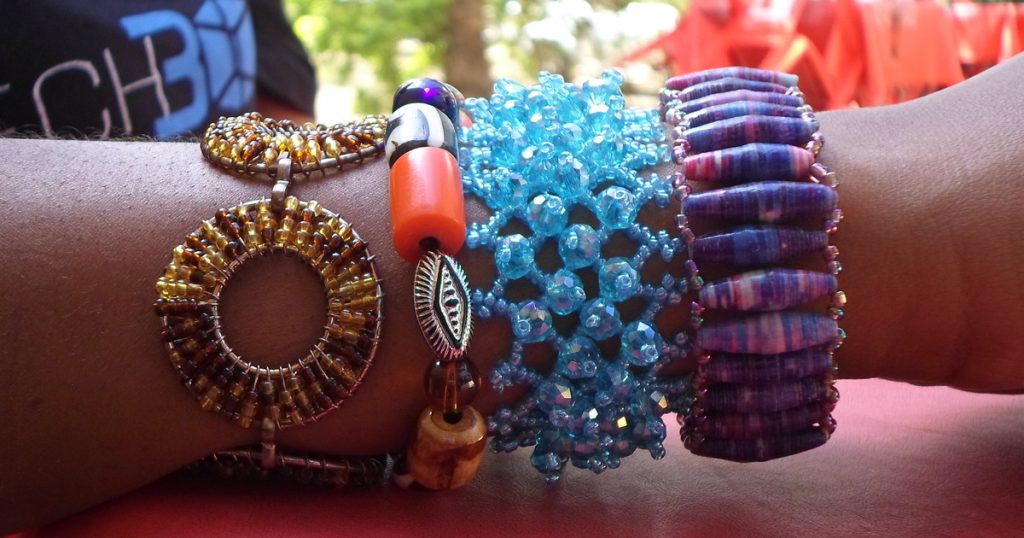Bracelets are more than just accessories; they’re statements of style and personality. But finding the right fit can sometimes be a challenge. Fear not! Our ultimate BRACELET SIZE GUIDE is here to help you navigate through the maze of wrist measurements and find your perfect match. Whether you’re shopping for yourself or a loved one, follow these steps to ensure that your bracelet fits like a glove.
How to Measure Your Wrist for Bracelet Size
Measuring your wrist for bracelet size is essential to ensure a comfortable fit. Here’s how to do it :
- Gather your materials : You’ll need a flexible measuring tape or a strip of paper and a ruler.
- Wrap around your wrist : Take the measuring tape or paper strip and wrap it around your wrist at the widest point. This is usually just above the wrist bone.
- Take the measurement : If you’re using a measuring tape, note the measurement where the end overlaps. If you’re using a paper strip, mark the point where it overlaps with a pen or pencil, and then measure the length with a ruler.
- Determine your bracelet size : Once you have your wrist measurement, add about 0.5 to 1 inch (1.3 to 2.5 cm) to that measurement to determine your bracelet size. This additional length will allow for comfortable movement and space for the bracelet.
- Choose your bracelet : Now that you have your bracelet size, you can confidently select a bracelet that will fit comfortably on your wrist.
Remember, the fit of a bracelet is a matter of personal preference. Some people prefer a snug fit, while others prefer a looser one. Adjust the additional length accordingly based on your preference.

Understanding Bracelet Sizing Standards
Bracelet sizing standards typically vary depending on the region and the type of bracelet being considered. However, there are some general guidelines that can help you understand how bracelet sizing works :
- Length : The length of a bracelet is usually measured from end to end, including the clasp. Standard lengths for bracelets can range from 6.5 inches to 8 inches for adults, with variations depending on the design and intended fit.
- Sizing Chart : Many jewelers provide sizing charts that indicate the average wrist sizes for different age groups and genders. This can give you a rough idea of what length might be suitable for a particular person.
- Adjustability : Some bracelets come with adjustable features such as extension chains or adjustable sliders, allowing for a more customized fit.
- Average Sizes : While there are standard lengths, it’s important to note that wrist sizes can vary greatly among individuals. The average wrist size for adult women is typically around 6 to 7 inches, while for adult men it’s usually between 7 to 8 inches.
- Children’s Bracelets : Bracelets for children are generally smaller, with typical lengths ranging from 4 to 6 inches, depending on the age of the child.
- Custom Sizing : Many jewelers offer custom sizing options where you can specify the exact length you need for your bracelet. This is particularly useful if you have a wrist size that falls outside of the standard range.
- Consider Comfort : When selecting a bracelet size, it’s important to consider comfort. You don’t want the bracelet to be too tight or too loose, as this can be uncomfortable to wear.
- Try Before You Buy : If possible, try on different sizes of bracelets to see which one fits best. This can help you determine the most comfortable and flattering size for your wrist.
By understanding these bracelet sizing standards, you can ensure that you choose the right size bracelet for yourself or for someone else.
Different Types of Bracelet Clasps and Their Impact on Size
Bracelet clasps come in various designs, each with its own impact on the size, fit, and style of the bracelet. Here are some common types :
- Lobster Clasp : This is one of the most popular types of clasps. It’s easy to use and provides a secure closure. However, the size of the lobster clasp can add a bit of bulk to the bracelet.
- Toggle Clasp : Toggle clasps consist of a bar that is inserted into a ring to close the bracelet. They can add a decorative touch to the design and are often larger than other types of clasps, affecting the overall length of the bracelet.
- Spring Ring Clasp : Similar to a lobster clasp, the spring ring clasp is easy to use and provides a secure closure. It’s typically smaller in size, which can be advantageous for delicate bracelets where bulkiness is a concern.
- Magnetic Clasp : Magnetic clasps are convenient to use as they simply snap together with magnets. However, they can add extra length to the bracelet when closed, as the magnets need space to align properly.
- Box Clasp : Box clasps have a box-like mechanism with a tab that slides into it for closure. They can be quite secure but tend to be larger in size, which may affect the overall fit of the bracelet.
- Slide Lock Clasp : These clasps have a sliding mechanism that locks the bracelet in place. They can be sleek and low-profile, which is beneficial for bracelets where a bulky clasp is undesirable.
- Hook and Eye Clasp : This type of clasp consists of a hook on one end and a loop (or eye) on the other. They are simple to use and can add a decorative element to the bracelet. However, they may require additional length to accommodate the hook and loop.
When choosing a bracelet clasp, consider not only its functionality but also how it complements the design and size of the bracelet. Additionally, factor in any preferences or requirements for ease of use, security, and aesthetics.
Adjusting Bracelet Size : Tips and Techniques
Adjusting bracelet size can be a tricky task, but with the right tips and techniques, you can get it just right. Here are some steps to guide you through the process :
- Determine the Correct Size : First, you need to know the size you want the bracelet to be. You can measure your wrist using a flexible measuring tape or simply wrap a piece of string around your wrist and then measure it against a ruler.
- Identify Adjustability Options : Many bracelets come with adjustable features like extension chains, clasps with multiple loops, or elastic/stretchy bands. If your bracelet has these features, adjusting the size will be much easier.
- Remove Excess Links : If your bracelet has a metal band with removable links, you can adjust the size by removing some links. Use a small tool like a jewelry screwdriver to remove the pins holding the links together. Be careful not to lose the pins, as you may need them if you want to readjust the size later.
- Add Extension Chains : For bracelets with extension chains, you can simply fasten the clasp on a different loop to make the bracelet tighter or looser according to your preference.
- Use Adjustable Knots : If your bracelet is made of a material like leather or cord, you can adjust the size by tying adjustable knots. The sliding knot is a popular choice for this purpose. There are many tutorials available online that can guide you through tying different types of adjustable knots.
- Consider Professional Help : If you’re unsure about adjusting the size yourself or if the bracelet requires complex adjustments, it’s best to seek help from a professional jeweler. They have the expertise and tools needed to make precise adjustments without damaging the bracelet.
- Test for Comfort : Once you’ve adjusted the size, wear the bracelet for a while to ensure it feels comfortable on your wrist. It shouldn’t be too tight that it cuts off circulation or too loose that it slides off easily.
By following these tips and techniques, you can adjust the size of your bracelet to fit your wrist perfectly. Remember to take your time and be patient, especially if you’re making adjustments yourself to avoid damaging the bracelet.

Common Mistakes to Avoid When Choosing Bracelet Size
When selecting the size for a bracelet, there are several common mistakes to avoid :
- Guessing the Size : Eyeballing it might seem convenient, but it often leads to inaccuracies. Guessing can result in a bracelet that’s too tight or too loose.
- Ignoring Wrist Measurement : Measure your wrist before buying a bracelet. Ignoring this step can lead to selecting a size that doesn’t fit well.
- Forgetting About Comfort : A bracelet that’s too tight can be uncomfortable to wear, while one that’s too loose might slip off easily. Prioritize comfort when choosing the size.
- Not Considering Bracelet Style : Different bracelet styles require different fits. For example, a snugger fit might be suitable for a beaded bracelet, while a looser fit could work better for a cuff bracelet.
- Disregarding Closure Mechanism : Pay attention to how the bracelet closes. Some closures require extra length for clasping, so be sure to account for this when determining the size.
- Overlooking Personal Preference : Consider how you prefer your bracelets to fit. Some people like a snug fit, while others prefer a bit of movement. Take your personal preference into account.
- Not Checking Sizing Guides : Many jewelry websites provide sizing guides to help you select the right size. Take advantage of these resources to ensure a proper fit.
By avoiding these common mistakes, you can choose a bracelet size that fits comfortably and looks great on your wrist.
Conclusion
Based on the data and measurements provided, it is recommended that you choose a bracelet size that corresponds to your wrist circumference plus a slight allowance for comfort. Typically, adding 0.5 to 1 inch (1.27 to 2.54 centimeters) to your wrist circumference will ensure a comfortable fit. However, it’s important to note that this is a general guideline and individual preferences may vary. It’s always a good idea to try on different sizes or use a measuring tape to accurately determine the best fit for you.
